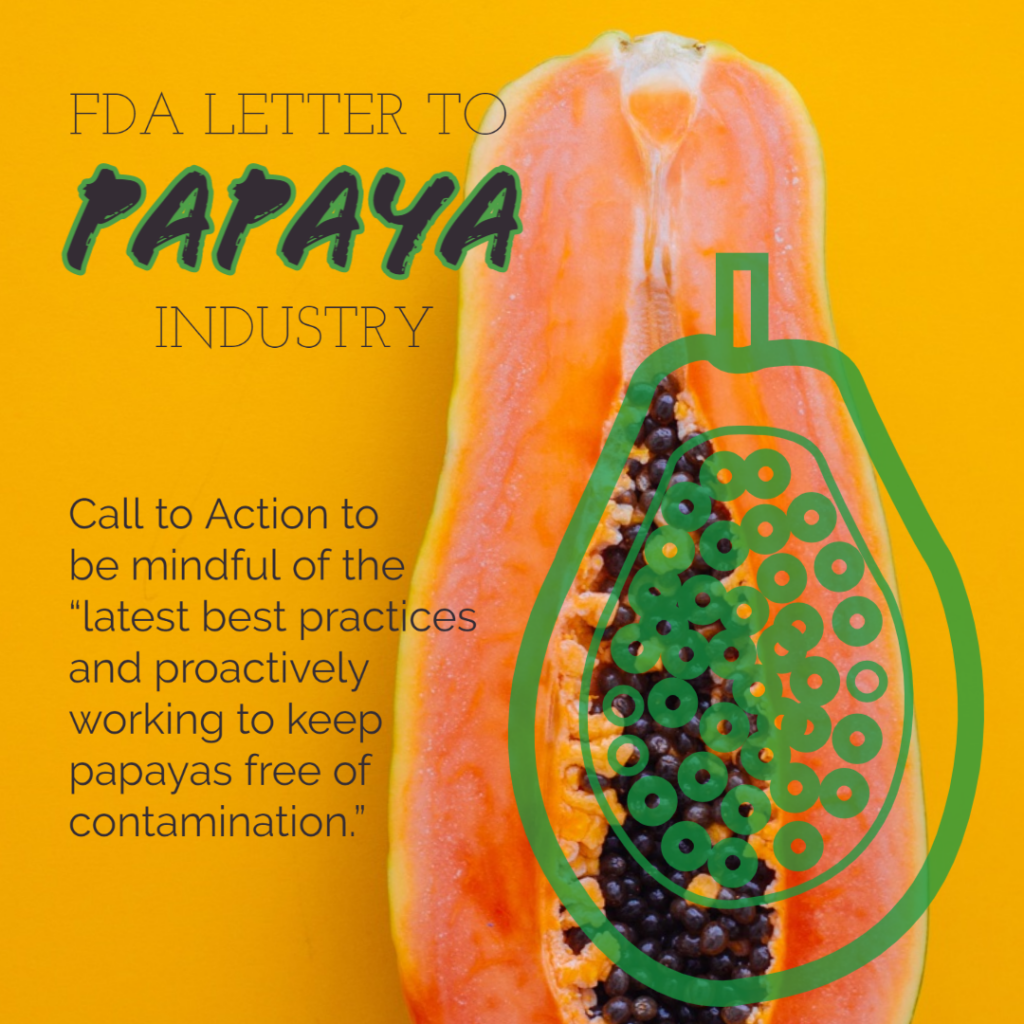Mission, Texas: June 26, 2020: Yesterday, the U.S. Food and Drug Administration (FDA) published a letter to the entirety of the papaya industry. Growers, packers, distributors, importers and retailers were all put on notice in a Call to Action to be mindful of the “latest best practices and proactively working to keep papayas free of contamination.”
The letter calls on “all sectors of the papaya industry to break the cycle of recurring outbreaks.” It goes on to outline the work that has been done over the last year within FDA, SENASICA and COFIPRIS – the latter two being governmental agencies in Mexico with oversight of the food safety, agricultural goods and enforcement of regulations over these sectors.
The letter also makes mention of the work undertaken by the Texas International Produce Association (TIPA) and the United Fresh Produce Association (United Fresh) and the “Food Safety Best Practices Guide for the Growing & Handling of Mexican Papaya, First Edition” which is available for free in English or Spanish on the webpages of either association.
“We are incredibly humbled that FDA saw fit to acknowledge the efforts our industry has taken to address the very concerns they outline in their letter,” stated Dante Galeazzi, president of TIPA. “Our members share the same concerns as FDA, and that is why we’ve been so aggressive in our work to address these concerns.” “Work began on the Best Practices manual in November 2019 and it was published by April 2020,” shared Dr. Jennifer McEntire, Vice President of Food Safety at United Fresh. “That effort was a true combination of the international papaya industry, academia, and government. Now, the key will be in implementing the practices developed in the guide and improving the baseline of best practices across that industry.”
Along that vein, TIPA has partnered with ProExport Papaya, a promotional organization for papayas in Mexico, to provide online education and training for the guide. “The trainings are all virtual which will allow us to have a wide reach and ideally get a large portion of the industry in Mexico trained on the protocols outlined in the guide,” shared Galeazzi. “This letter from the FDA is a reminder that as an industry, we have to remain vigilant in both being aware of potential risks while at the same time actively working to mitigate as many of those risks as possible. It is the hope of TIPA, and I believe the industry throughout North America, that these efforts by FDA, SENASICA, our association and United Fresh will serve to bolster the safety of both the papayas and the consumers.”
A copy of the letter from FDA to the Papaya industry can be found at https://www.fda.gov/media/139444/download. And registration for the Online Training Classes can be found at http://www.foodsafetycts.com/papaya.
